Topeka, KS Pollen and Allergy Report for Summer 2023
Pollen Allergy Trends in Topeka, KS
When is pollen lowest in Topeka, KS?

February
Lowest month total PPM
Avg. PPM
When is pollen highest in Topeka, KS?

April
Highest month total PPM
Avg. PPM
How does pollen in Topeka, KS compare to Kansas?
Topeka has a higher average PPM than the state of Kansas.
Topeka yearly avg PPM:
Kansas yearly avg PPM:
How does pollen in Topeka, KS compare to the USA?
Topeka has a higher average PPM than the USA.
Topeka yearly avg PPM:
USA yearly avg PPM:
Is pollen worse this year in Topeka, KS?
Spring 2023 was worse than spring 2022.
Spring 2023 PPM:
Spring 2022 PPM:
Average PPM in Topeka, KS
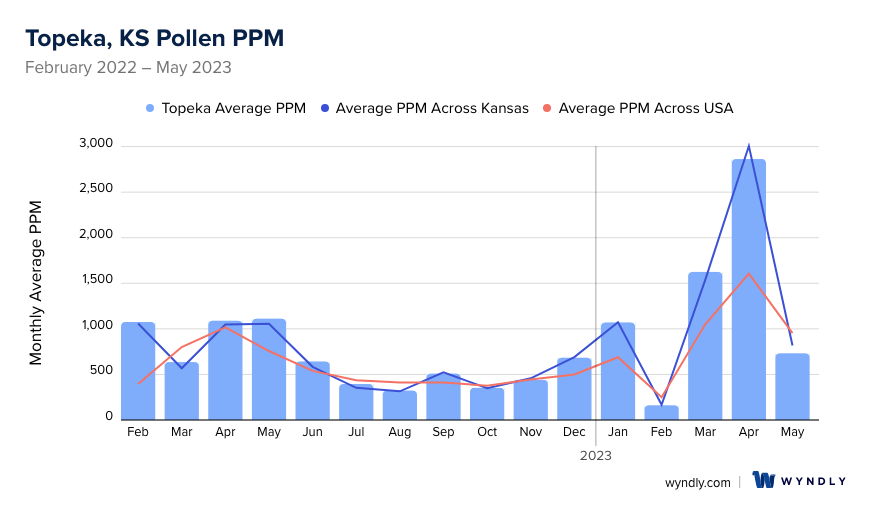
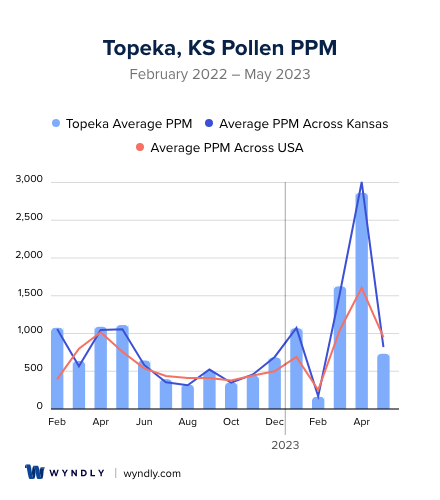
Topeka, KS Pollen and Allergy Breakdown by Month
Grass
When is grass pollen highest in Topeka, KS?
February has the highest grass pollen in Topeka, KS with an average PPM of
When is grass pollen lowest in Topeka, KS?
December has the lowest grass pollen in Topeka, KS with an average PPM of
Tree
When is tree pollen highest in Topeka, KS?
April has the highest tree pollen in Topeka, KS with an average PPM of
When is tree pollen lowest in Topeka, KS?
September has the lowest tree pollen in Topeka, KS with an average PPM of
Weed
When is weed pollen highest in Topeka, KS?
April has the highest weed pollen in Topeka, KS with an average PPM of
When is weed pollen lowest in Topeka, KS?
February has the lowest weed pollen in Topeka, KS with an average PPM of
Topeka, KS Pollen Monthly Breakdown by Pollen Type
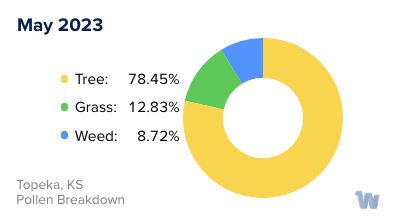
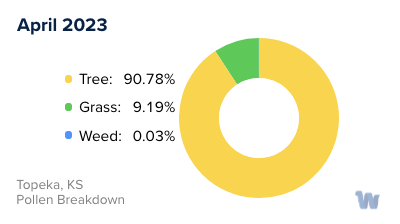
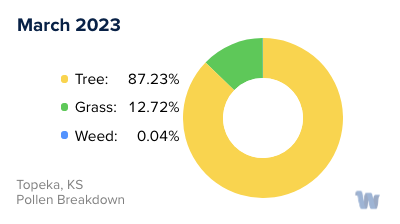
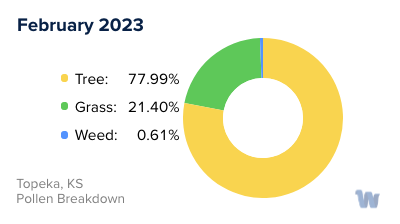
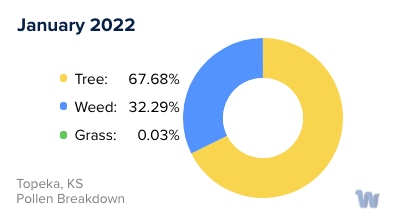
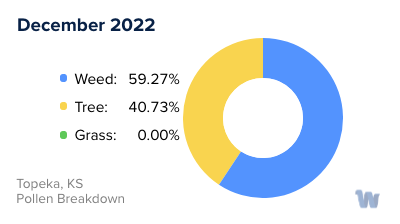

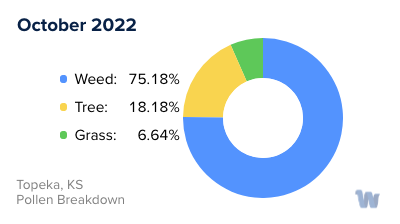
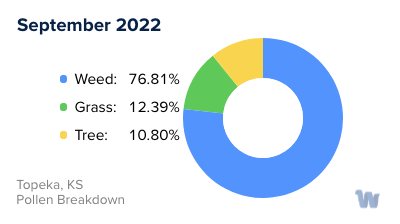
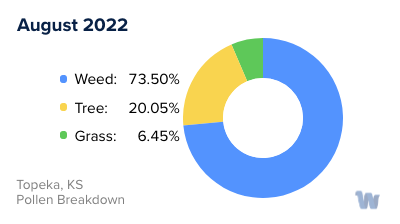
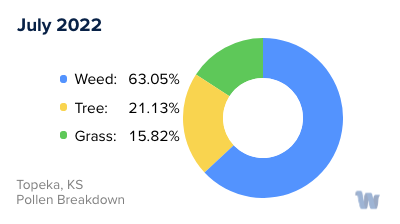
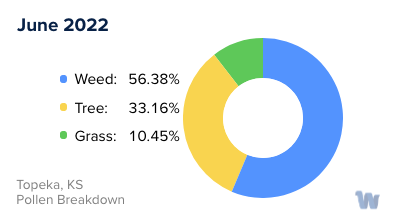
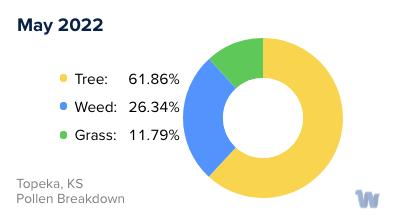
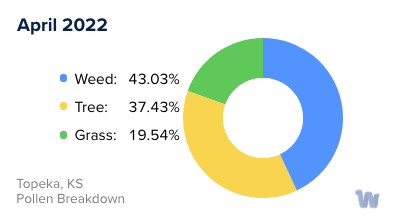
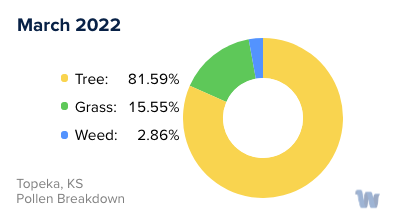
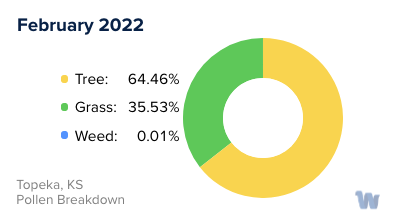
Pollen and Hay Fever in Topeka, KS
In the picturesque city of Topeka, Kansas, the arrival of spring and summer is eagerly anticipated. However, for some residents, these seasons also bring the less welcome onset of pollen allergies and hay fever. Pollen allergies occur when one's immune system reacts to pollen, viewing it as a threat and causing symptoms like sneezing, runny nose, and itchy eyes.
Topeka is nestled in the heart of the Great Plains, an area rich with diverse vegetation. This means that residents must contend with a variety of pollen sources. In the spring, the culprits are mainly trees. Oak, cedar, and elm trees are abundant in Topeka and their pollen can be particularly troublesome for allergy sufferers.
As spring transitions into summer, grasses take center stage. The wide expanses of prairie around Topeka are home to a variety of grasses. Bermuda, Timothy, and Kentucky bluegrass release pollen that often triggers hay fever symptoms. Hay fever, also known as allergic rhinitis, is a common response to pollen and involves inflammation of the nasal passages.
By late summer and early fall, it's the weeds that become the main source of pollen. Ragweed is particularly notorious in Topeka. It’s not uncommon to find ragweed growing along roadsides or in fields, and a single plant can produce up to a billion grains of pollen in a season.
Understanding the types of pollen and their respective seasons can be helpful for those living in Topeka. Being aware of when different plants are pollinating allows individuals to be prepared for the possibility of pollen allergies and hay fever, and to take steps to minimize exposure during peak times. It’s essential to foster a harmonious relationship with the beautiful, yet sometimes challenging, natural environment of Topeka, Kansas.


